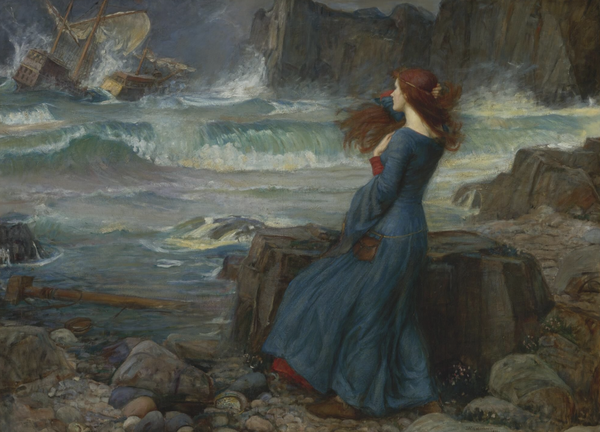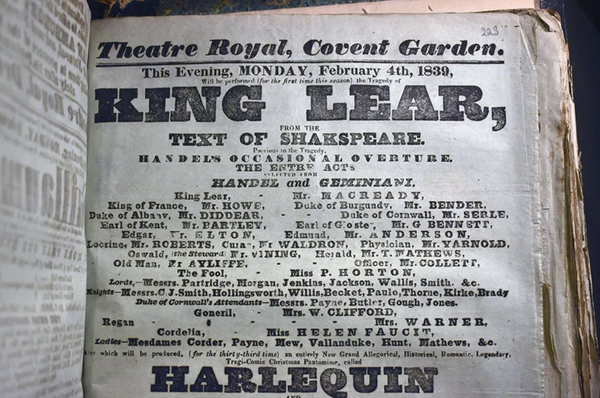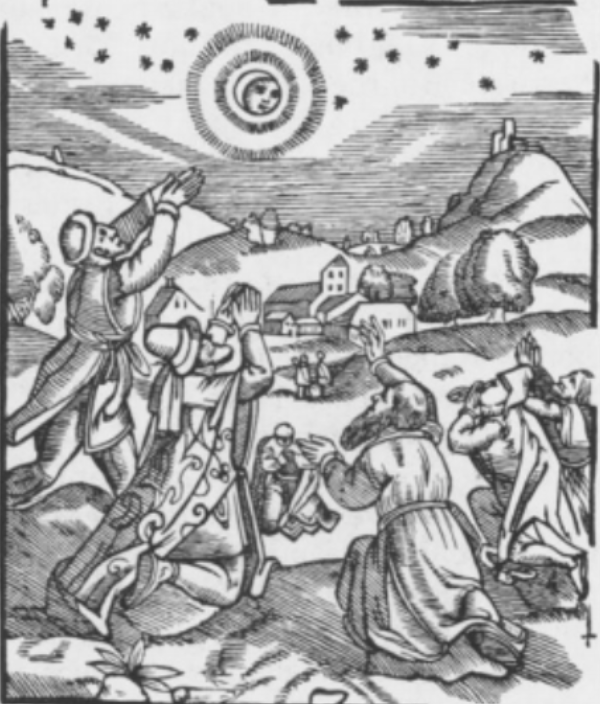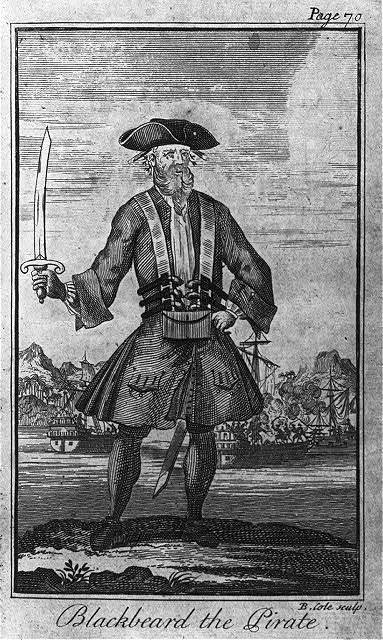Volume 19: February 15, 2021
The Plight of the Children of the Chapel
By London Johns
In 1600, 13-year-old Thomas Clifton was walking to school when he was kidnapped and brought by force to the Blackfriars playhouse. When his father, Henry Clifton, arrived at Blackfriars to retrieve him, he was taunted and told to take his case “to whom he would” (qtd. in Forse 194). Thomas was not released. Instead, he was given a script to memorize, and told that if he did not do so, he would be whipped. Thomas was only one of many children who were kidnapped from their schools or from the street to become singers and actors against their will. This violent practice blatantly exploited children for the profit of theater and choir directors, but it was nevertheless endorsed by Queen Elizabeth I under the guise of gathering the most talented children to perform together.
Clifton’s kidnappers were named Nathaniel Giles and Henry Evans. Giles was the Master of the Children of the Chapel Royal -- Queen Elizabeth I’s choir of children -- and Nathaniel Giles was a producer at the Blackfriars theater (Soth). Evans had previously worked with a group of young players, and was attempting to rebuild a company of child actors at Blackfriars after another new company of children -- Paul’s Boys -- proved a success (Knutson 11). In order to do this, he needed to recruit a group of young boys. He joined forces with Giles, who was searching for young performers to join the Children of the Chapel Royal.
As long as they did not take the children of people capable of challenging them legally, Evans and Giles’s plan to take talented children was certain to benefit them. Even if parents succeeded in taking their children back from the choir or theater where they were unwillingly employed, the choir or theater could still profit from taking the child, as money that parents paid to release their children went towards funding the companies that kidnapped the children in the first place. As James H. Forse wrote,
“Faced with a shortage of money, haunted by the prospect of forfeiture of the £400 bond and loss of all they had invested to date, they may have sought a way to turn their royal commission into ready cash…Many a father and master, silently and resignedly, may have “bought-out” his son’s or apprentice’s “contract” to help finance Henry Evan’s reopening of Blackfriars Theatre.” (qtd. in Soth)
Amazingly, the actions of Giles and Evans were legal -- or at least not explicitly illegal. In 1597, Queen Elizabeth I granted Giles a warrant to “take” children “in all cathedral collegiate, parish churches, chapels or any other place or places”, as well as to transport them from place to place and house them where they were to perform (Wickham et al. 263). This commission was intended to ensure that the choir boys who sang for the queen were the best in the country; Giles could identify the most talented students in school choirs and recruit them. However, many of the boys taken to perform at the Blackfriars playhouse, including Thomas Clifton, were not particularly talented singers. They were also taken to perform as actors, not singers -- an occupation which was not mentioned in Elizabeth I’s warrant.
Thomas’s inability to sing would prove the determining factor in the court case that allowed him to avoid becoming a member of the company of boy players at Blackfriars. In 1601, Henry filed a lawsuit against Giles, Evans, and other “confederates” (qtd. in McCarthy 228). He argued that since Thomas and many of the other boys taken to be part of the company had no musical training or talent, Giles’s actions were not excused by the commission. The children whom Giles had taken to impress into the Children of the Chapel were
“no way able or fit for singing, nor by any the said confederates endeavoured
to be taught to sing, but [were] by them, the said confederates, abusively employed, as
aforesaid, only in plays and interludes.” (qtd. in Adams 206)
Henry’s lawsuit was successful. Because most of the children had no training and were not talented singers, it was found that they were not taken to become part of Queen Elizabeth’s choir, and Evans was forced to leave the city (Soth). However, Giles did not face significant consequences. His order to take talented children for the Chapel Royal was renewed in 1604 and again in 1626, the second time with the addition that the boys could not be employed as “comedians or stage players,” because “it is not fit or decent that such as should sing the praises of God Almighty should be trained or employed in such lascivious and profane exercises” (qtd. in Flood 466). It is not even certain that Henry Clifton’s lawsuit was the reason for this addition; companies of boy players had by then been involved in several different political scandals.
It is no wonder that companies of young boys had become a trend, for boy players had several advantages over adult players. They were not paid, so their companies could cast more actors than could adult companies (Forse 42). Child actors were also more adaptable than their adult counterparts; adult companies had to use child actors to play women and children, while companies of child actors could play any role. Boy players were able to convincingly play women -- Samuel Pepys wrote that "one Kinaston, a boy, acted the Duke's sister, but made the loveliest lady that ever I saw in my life” (qtd. in Adams 207). They were also able to play men; Ben Jonson wrote of a boy player who had played the part of an old man so convincingly that the Fates mistook him for one and ended his life:
Years he numbered scarce thirteen
When Fates turned cruel,
Yet three filled zodiacs had he been
The stage's jewel;
And did act, what now we moan,
Old men so duly,
As, sooth, the Parcae thought him one,
He played so truly.” (qtd. in Adams 207)
Boy players were also valuable investments. As they grew older and their voices dropped, many continued acting but switched to playing only male parts. Edward Kynaston was a boy player who played female roles until 1661, when he was twenty-one years old. He then switched to playing male roles until his retirement in 1699 (“Edward Kynaston.”).
Companies of boy players were so well-liked that their existence threatened those of adult players, who were quickly becoming overshadowed by the childrens’ popularity. Between 1558 and 1576, seventy-eight rewards were paid for Court performances; forty-six of them went to child performers, leaving only thirty-two paid to adult companies (Chambers 4). Adult players’ anxiety about this trend was expressed briefly in a section of the Folio version of Hamlet. A troupe of child actors had performed in the 1580s, so these lines had “a nostalgic stamp”, but the popularity of child players was at its peak in 1601, when Hamlet was probably first performed (van Es 198). By the time the second quarto of Hamlet was published in 1604, this reference would have already been dated. When Hamlet asked why a troupe of players had become less successful while he was away, Rosencrantz explained that
“there is, sir, an aerie of children, little eyases, that cry out on the top of question and are most tyrannically clapped for ’t. These are now the fashion and so berattle the common stages (so they call them) that many wearing rapiers are afraid of goose quills and dare scarce come thither.” (Shakespeare 2.2.361-367)
The players themselves had not, in Hamlet’s words, grown “rusty”. Instead, they had been replaced with a more fashionable group of boy players. Hamlet inquired further: “Who maintains ’em? How are they escoted? Will they pursue the quality no longer than they can sing?” (368-370). Rosencrantz replied that “the nation holds it no sin to tar them to controversy” (376-377). In other words, the children were made to voice controversial opinions. Boy players did, in fact, have a history of being used to voice controversial political opinions in the form of satires. Boys’ companies were closed in the 1580s because of their involvement in the Marprelate controversy, an incident wherein an anonymous author published satirical pamphlets against bishops; around the time that Hamlet was written, they were enjoined because of their involvement in the “War of the Theatres,” a rivalry between playwrights Ben Jonson, Thomas Dekker, and John Marston; and in 1608-09 they would be permanently shut down after satirical attacks on the Court of James I (Forse 42).
Thomas Clifton’s abduction was not peaceful. According to his father’s complaint, his abductors “with great force and violence did seize and surprise” him, and “to the great terror and hurt of him … haul, pull, drag, and carry” him away to the playhouse (qtd. in Adams 210). However, the “terror and hurt” that his kidnapping caused Thomas was irrelevant to the legality of the act. Instead, Thomas’s freedom from a life he did not want came down to luck. If Henry Clifton had not been a powerful enough man to sway the law to his side, or if Thomas had been born with any musical talent, Thomas could have been forced into performing as a boy player for no pay and under the threat of physical violence, and may have remained an actor for the rest of his life. That it remained legal, even after Henry Clifton’s lawsuit, to “take” children to perform in choirs without their consent or that of their parents suggests that Elizabethan children were thought of as resources to trade, exploit for profit, and use as vessels for political ideas rather than as people with their own autonomy.
Works Cited
Adams, Joseph Quincy. Shakespearean Playhouses; a History of English Theatres from the Beginnings to the Restoration. Houghton Mifflin Company, 1917, Internet Archive, archive.org/details/shakespeareanpl01adamgoog/.
Chambers, E. K. The Elizabethan Stage. II, The Clarendon Press, 1923, Internet Archive, archive.org/details/in.ernet.dli.2015.79128/.
DeMolen, Richard L. "Richard Mulcaster and the Elizabethan Theatre." Theatre Survey 13.1 (1972): 28-41. Print.
“Edward Kynaston.” Encyclopædia Britannica, Encyclopædia Britannica, Inc., 1 Jan. 2021, www.britannica.com/biography/Edward-Kynaston.
Flood, W. H. Grattan. “The Conscription of Choristers for the Chapel Royal from 1400 to 1700.”
The Musical Times, vol. 57, no. 884, 1916, pp. 466–467. JSTOR, www.jstor.org/stable/910236. Accessed 16 Feb. 2021.
Forse, James H. Art Imitates Business: Commercial and Political Influences in Elizabethan Theatre. Popular Press, 1993, Google Books, books.google.com/books?id=r7gHKfW5zSEC.
Knutson, Roslyn L. “Falconer to the Little Eyases: A New Date and Commercial Agenda for the ‘Little Eyases’ Passage in Hamlet.” Shakespeare Quarterly, vol. 46, no. 1, 1995, pp. 1–31. JSTOR, www.jstor.org/stable/2871152. Accessed 16 Feb. 2021.
“Kynaston.” British Museum, British Museum, 19thC, www.britishmuseum.org/collection/object/P_1943-0410-1349.
McCarthy, Jeanne. The Children's Troupes and the Transformation of English Theater 1509-1608. Taylor & Francis, 2016, Google Books, books.google.com/books?id=GiAlDwAAQBAJ.
Shakespeare, William. Hamlet. Edited by Barbara Mowat and Paul Werstine, Folger Shakespeare Library, The Folger Shakespeare, shakespeare.folger.edu/.
Soth, Amelia. “Her Majesty’s Kidnappers.” Jstor Daily, Jstor, 17 Dec. 2020, daily.jstor.org/kidnapping-for-the-queens-choir/.
“The Funeral Procession of Queen Elizabeth I to Westminster Abbey, 28th April 1603.” British Library, British Library, 1603, www.bl.uk/collection-items/drawings-of-the-funeral-procession-of-elizabeth-i.
Van Es, Bart. Shakespeare in Company. OUP Oxford, 2013, Google Books, books.google.com/books?id=oIH1YHMkvJIC.
Wickham, Glynne, et al., editors. English Professional Theatre, 1530-1660. Cambridge University Press, 2000, Google Books, books.google.com/books?id=y82YJ1P5gksC.







